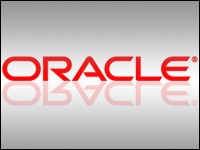
Sometimes you walk away from a user group meeting concluding that the company didn’t introduce much that was really new. You might get the usual product announcements or the dot-version releases and you may take a course that makes you a little smarter about the fine points of some esoteric feature that helps you to do your job. You might say that such gatherings are evolutionary rather than revolutionary.
Last week’s Oracle OpenWorld was nothing like that.
I am sure that Oracle did not have groundbreaking announcements for all of its estimated 2,500 products, but what I saw had “revolution” written all over it. In CRM and in the fundamentals of database operation, the company appeared to be closely hewing to CEO Larry Ellison’s belief that everything changes about every 10 years. In the circumstance, it looked to me like Oracle was giving history a little push.
Siebel Rising
It took several years for Oracle to absorb Siebel and retool its database — when Oracle bought Siebel, DB2 was the database of choice, at least for the on-demand product, but that’s old news. The Siebel people who came over with the acquisition have been hard at work improving the product that was once the leader in enterprise CRM under the direction of SVP of CRM Anthony Lye.
At OpenWorld, Lye’s team introduced a new generation of Siebel products and quite possibly a new generation of CRM, which the company dubbed “Social CRM.” The Siebel team takes pains to make the point that Social CRM is not a replacement for conventional CRM, and in many respects Social CRM is simply Oracle branding for CRM 2.0.
Naming aside, Oracle has made a significant contribution to the CRM 2.0 discussion by providing a framework for multiple kinds of social media-infused applications that gather and share data in support of conventional and non-conventional business processes.
One of the knocks against CRM 2.0 has been that the idea has been made up of a large group of Balkanized applications, many from start-up companies, that provided a piece to the puzzle. So far, CRM 2.0 has often left the user to figure out how to bring disparate solutions together to support a company’s business processes. Sound familiar? It should — it’s what often happens in early markets. Oracle’s effort to bring Social CRM together under one roof marks an important turning point in the evolution of CRM 2.0.
The company’s Social CRM kit includes a prospecting tool that helps salespeople figure out what to sell and who to sell it to, a loyalty and marketing product that helps vendors zero in on customer needs and to sell to those needs and a sales library. What you just read is a gross over simplification, but I leave it to you to fetch the details.
Bee Software — Haven’t We Seen This Movie?
More generally speaking, Oracle also introduced Beehive, a collaboration application that will help enterprises bring together knowledge workers and their knowledge work to share ideas and, most importantly, bring the right people together especially for ad hoc situations.
I do not pretend to understand Beehive any better than this, and judging from the presentations, I am not sure Oracle does either. That may be too harsh, and I expect that what Beehive does is so new that it will take time just to understand the business pain that it exposes.
If anything, Beehive might say a lot about Oracle’s efforts to look over the horizon to support its customers.
Larry’s a Database Guy at Heart
I was thinking about going home rather than waiting around for Larry Ellison’s keynote, which was scheduled for Wednesday. By the end of Tuesday, I had enough information about CRM (and enough CRM parties) to file my share of stories. I stayed anyhow and I was not disappointed.
It has been a long time since I was intimately involved with the innards of relational databases, and some of the discussions I heard last week told me the obvious: While the RDBMS (relational database management system) is essential, it is also a relatively mature thing. That was all before the keynote. The big announcement that Ellison made was the new hardware device called “Exadata,” and it gave me a whole new appreciation of the complexities behind today’s on-demand applications.
I am not a database analyst, but it looks to me like Exadata might be a new category of appliance that is certainly needed for enterprise IT. Ellison described Exadata as a database server and not simply a data server, and the difference can be illuminating. Conventional strategy is to bring blocks of data into memory from disk whenever a request is made. Sometimes the associated data has relevance and the user needs it, but often it is not useful and simply takes up memory.
Exadata is a creation of HP and Oracle that adds more processors, memory and expanded data pathways to storage to provide a system that can deliver orders of magnitude better performance to database intensive activities.
My interpretation of the presentation is that rather than collecting blocks of data, the database server collects finer grained fields, or maybe rows. The result is more data that you need and less traffic in data that you don’t need. This is my crude interpretation, and I am not a DBA, but if this is close, it says a lot.
Fitting It Into the Big Picture
The downside of social media is that it captures a great deal of data that must be stored and sorted to provide useful information. According to Ellison, conventional storage systems slow down at the terabyte level, leaving enterprises with the frustrating problem of having rich data but not always having ways to access it in a timely manner.
Although Ellison never said so much in his presentation, I have to suspect that some of the impetus for Exadata’s development came from the realization that the largest on-demand applications could cause significant problems for the Oracle database.
I have to say that in the past I have been an unabashed Oracle basher, with what I considered just cause — such as the company’s attempt to take over the major front-office vendors. But the last several years have proven that Oracle has been a pretty good steward. They said that they intended to maintain and enhance the disparate offerings they acquired and that they intended to make integration through middleware possible and straightforward, and by and large they have done these things. I am therefore reducing my threat level from red to orange and am now officially an Oracle skeptic. Hey, it’s my job.
Denis Pombriant is the managing principal of the Beagle Research Group, a CRM market research firm and consultancy. Pombriant’s research concentrates on evolving product ideas and emerging companies in the sales, marketing and call center disciplines. His research is freely distributed through a blog and Web site. He is working on a book and can be reached at [email protected].






















































